Text
Jaguar E–Type Lightweight Low Drag Coupé
1963
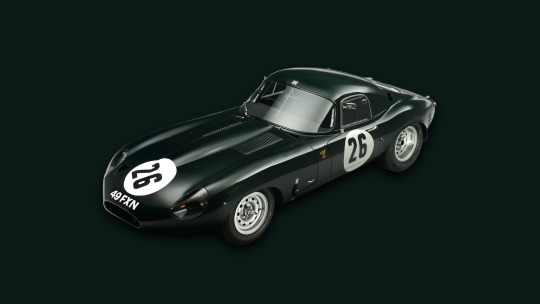




Information
Shortly after the introduction of the E-Type, Jaguar wanted to investigate the possibility of building a car more in the spirit of the D-Type racer from which elements of the E-Type's styling and design were derived. One car was built to test the concept designed as a coupé. Unlike the steel production E-Types, the LDC used lightweight aluminium. Malcolm Sayer retained the original tub with lighter outer panels riveted and glued to it. The front steel sub frame remained intact, the windshield was given a more pronounced slope, and the rear hatch was welded shut. Rear brake cooling ducts appeared next to the rear windows, and the interior trim was discarded, with only insulation around the transmission tunnel. With the exception of the windscreen, all cockpit glass was perspex. A tuned version of Jaguar's 3.8-litre engine with a wide-angle cylinder head design tested on the D-Type racers was used.
The only test bed car was completed in summer of 1962 but was sold a year later to Jaguar racing driver Dick Protheroe. Since then it has passed through the hands of several collectors on both sides of the Atlantic and is now believed to reside in the private collection of the current Viscount Cowdray.
Peter Lindner, the Jaguar distributor in Germany, had his Lightweight modified by competition department to include the low drag roof and rear panels as part of an effort to win the GT class at Le Mans. Lindner's car was more than a match for the Ferrari 250 GTO but mechanical problems forced it out of the race. Lindner was later killed in a racing accident that demolished his car, which has recently been restored.
Jaguar waited too long before committing to a racing program in earnest and what could have been a world champion in 1962 was not competitive by 1965.
#car#cars#carporn#carphotography#carphotographer#carphotos#carphoto#cargram#carinstagram#carlovers#carsofinstagram#carmodel#carlifestyle#carshow#cargramm#caroftheday#carstagram#carsdaily#exoticcars#carsofinsta#carsovereverything#instacars#cardesign#cardetailing#classiccar#classiccars#retrocar#retrocars#aestheticxcars#jaguar
6 notes
·
View notes
Text
Porsche 964 by Singer Vehicle Design
1989—1994 | 2018


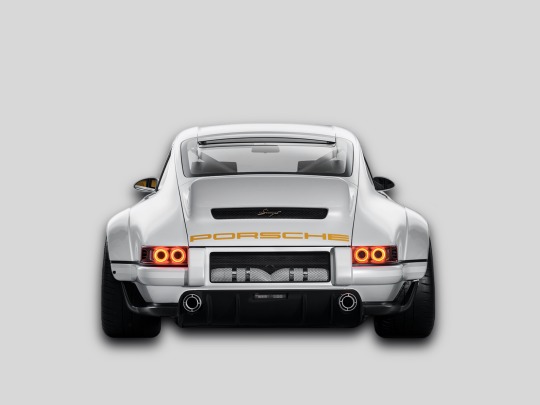


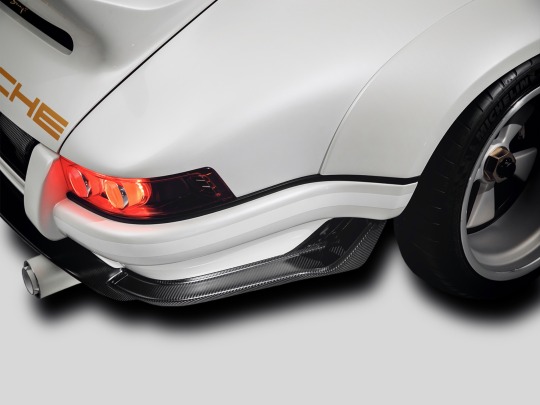

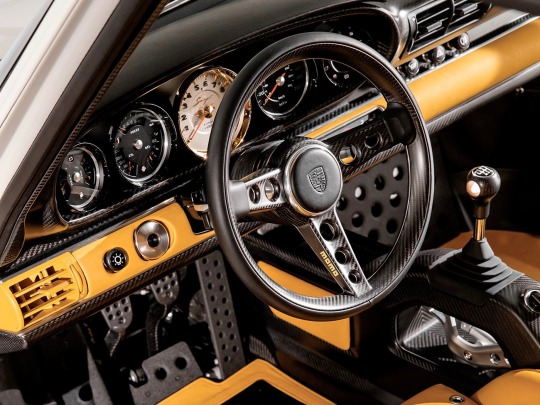
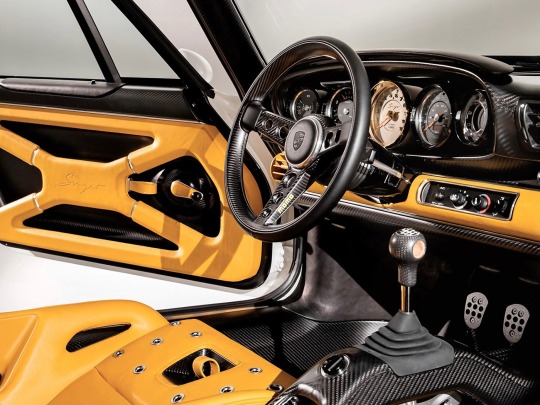
Information
964 is a Porsche car built in a concept proposed back in the 1930s by Ferdinand Porsche himself: a rear-engined layout and an air-cooled opposed motor. However, in addition to the general idea, the 964 became the heir to the classic 911 not only formally, but in fact was its deep modernization to meet the new requirements of active and passive safety, as well as increasingly stringent environmental standards. The model was developed using modern technologies and designs at that time: computer modeling, durable steels and alloys, permanent all-wheel drive, electronically controlled automatic transmission.
The dimensions and body style of the model repeated one-to-one its predecessor with minimal use of parts from the previous generation (Porsche itself claimed a figure of 83% of new parts). The exterior design was developed by Benjamin Dimson, who later served as director of the California studio of advanced design Mercedes-Benz.
Air-cooled motors were the next developments in the concept of the 1964 motor: six cylinders arranged opposite each other, air-cooled. Their design features repeated those on the latest second-generation 911 engines — nothing new was proposed. But the motors were the only unit that did not fall under the cardinal modernization.
There are new manual transmissions, a permanent all-wheel drive system and a new automatic transmission Tiptronic, which has no analogues in the world at the time of release. The chassis design was developed anew for the possibility of using all-wheel drive and had no common parts with its predecessor; absolutely new steering and brakes. The interior of the cabin, as well as the exterior of the body, was solved in the style of previous cars and differed only in new materials.
The model was in production for six years, sold through Porsche dealerships in 24 countries. It was released in the amount of 63 762 copies.
The reborn Porsche 964 represents a client-inspired partnership between Singer, Williams Advanced Engineering, and a handful of other acclaimed automotive specialists such as Bosch, Brembo, Michelin, and Hewland—most of whom developed components specifically for the car. Singer customer Scott Blattner was responsible for the genesis of the rarified restoration package as he looked to bolster and bespoke his 1990 Porsche 964.
Characteristics
Power: 500 hp
Length: 4270 mm
Width: 1650 mm
Height: 1320 mm
#car#cars#carporn#carphotography#carphotographer#carphotos#carphoto#cargram#carinstagram#carlovers#carsofinstagram#carmodel#carlifestyle#carshow#cargramm#caroftheday#carstagram#carsdaily#exoticcars#carsofinsta#carsovereverything#instacars#cardesign#cardetailing#classiccar#classiccars#retrocar#retrocars#aestheticxcars#porsche
1 note
·
View note
Text
Porsche 911 RSR–19
2019






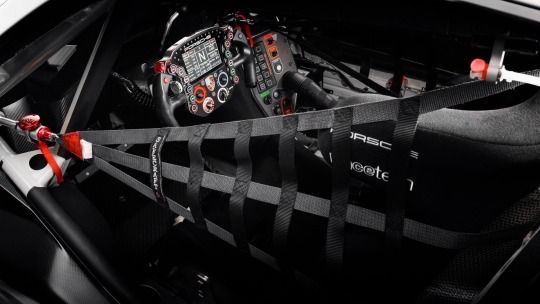
Information
A racing car developed by Porsche to compete in the LM GTE category of the Automobile Club de l'Ouest sanctioned FIA World Endurance Championship, European Le Mans Series and the GTLM class, of the International Motor Sports Association's IMSA WeatherTech SportsCar Championship. It serves as the direct replacement for the Porsche 911 RSR (2017). The car made its racing debut at the 2019 4 Hours of Silverstone. The car was unveiled at the 2019 Goodwood Festival of Speed, at the timing gantry of the Hillclimb circuit, just moments before its first public run, with Gianmaria Bruni at the wheel.
The motorsport cars are built together with all other motorsport cars from Porsche in the manufactory of the Motorsport Center in Weissach.
Characteristic
Power: 515 hp
Length: 4593 mm
Width: 2050 mm
Weight: 1245 kg
#car#cars#carporn#carphotography#carphotographer#carphotos#carphoto#cargram#carinstagram#carlovers#carsofinstagram#carmodel#carlifestyle#carshow#cargramm#caroftheday#carstagram#carsdaily#exoticcars#carsofinsta#carsovereverything#instacars#cardesign#cardetailing#racecar#racecars#sportcar#sportscar#aestheticxcars#porsche
1 note
·
View note
Text
Ferrari FXX–K Evo
2017







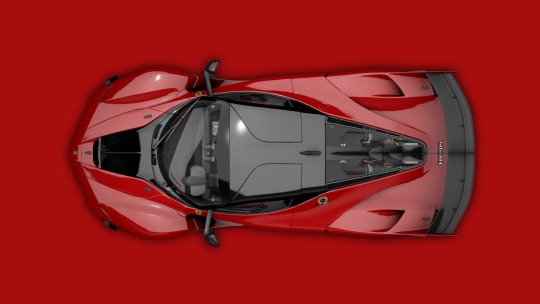


Information
The "FXX-K Evo" is Ferrari's research and development vehicle based on the brand's first hybrid sports car, the LaFerrari. The K in the new car's name refers to the kinetic energy recovery system (KERS) which is used to maximize performance. The "FXX-K Evo" is not intended to be used in competition and was developed to give an uncompromising experience to the driver.
The car was unveiled at the Ferrari Finali Mondiali 2017 on 28 October 2017 at Stazione Leopolda in Florence during the Ferrari 70th Anniversary celebration. It is an aerodynamic package, available for the existing Ferrari FXX-K. The FXX-K Evo allows the car to produce 23% more downforce than the standard FXX-K and 75% more than the road-legal LaFerrari due to a modified front fascia, a large rear wing and underbody diffusers. Performance and weight figures are unknown but a 90 kg (198 lb) decrease in weight is said to estimated by the manufacturer.
Characteristics
Top speed: 350 km/h
Acceleration to 100 km/h: 2,5 s
Power: 1050 hp
Length: 4896 mm
Width: 2051 mm
Height: 1116 mm
Weight: 1075 kg
#car#cars#carporn#carphotography#carphotographer#carphotos#carphoto#cargram#carinstagram#carlovers#carsofinstagram#carmodel#carlifestyle#carshow#cargramm#caroftheday#carstagram#carsdaily#exoticcars#carsofinsta#carsovereverything#instacars#cardesign#cardetailing#supercar#supercars#supercarlifestyle#supercarsdaily#aestheticxcars#ferrari
1 note
·
View note
Text
Ford GT40 Mk I Gulf Racing
1968




Information
The Ford GT40 is a high-performance endurance racing car commissioned by the Ford Motor Company. It grew out of the "Ford GT" (for Grand Touring) project, an effort to compete in European long-distance sports car races against Ferrari, which won every 24 Hours of Le Mans race from 1960 to 1965. Ford succeeded with the GT40, winning the 1966 through 1969 races.
The Mk I was the original Ford GT40. Early prototypes were powered by 4.2 L (255 cu in) alloy V8 engines and production models were powered by 289 cu in (4.7 L) engines as used in the Ford Mustang. Five prototype models were built with roadster bodywork, including the Ford X-1. Two lightweight cars (of a planned five), AMGT40/1 and AMGT40/2, were built by Alan Mann Racing in 1966, with light alloy bodies and other weight-saving modifications.
The Mk I met with little success in its initial tune for the 1964 and 1965 Le Mans races. The first success came after their demise at the Nassau Speed Weekend Nov 1964 when the racing was handed over to Carrol Shelby. Shelby's team modified the Ford GT40 and the first win at Daytona February 1965 was achieved. Much was later modified and run by John Wyer in 1968 and 1969, winning Le Mans in both those years and Sebring in 1969. The Mk II and IV were both obsolete after the FIA had changed the rules to ban unlimited capacity engines, ruling out the 7.0 L (427 cu in) Ford V8. However, the Mk I, with its smaller engine, was legally able to race as a homologated sports car because of its production numbers.
#car#cars#carporn#carphotography#carphotographer#carphotos#carphoto#cargram#carinstagram#carlovers#carsofinstagram#carmodel#carlifestyle#carshow#cargramm#caroftheday#carstagram#carsdaily#exoticcars#carsofinsta#carsovereverything#instacars#cardesign#cardetailing#classiccar#classiccars#retrocar#retrocars#aestheticxcars#forf
1 note
·
View note
Text
Aston Martin Victor
2020

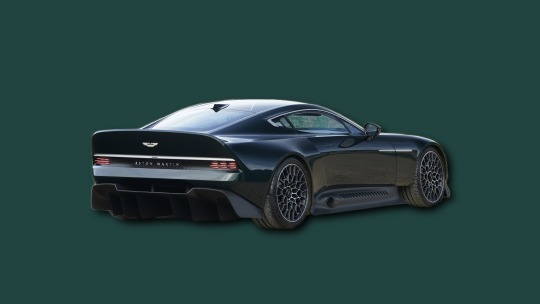




Information
A bespoke, one-off supercar developed by the company’s Q division. Built around a carbon-fiber monocoque from the One-77, a car that Aston Martin offered from 2009 to 2012, the Victor draws styling cues from the V8 Vantage of 1970s, as well as the race-spec DBS V8 (also known as the RHAM/1) that Aston Martin built in the late 1970s for the 24 Hours of Le Mans.
The 2020 Victor is powered by a naturally aspirated V-12 also sourced from the One-77, but some drivetrain components come from the much newer Valkyrie supercar. Q by Aston Martin built just one, so it’s one of those supercars that you can only hope to see in the metal at a fancy auto show.
Characteristics
Top speed: 360 km/h
Acceleration to 100 km/h: 3,4 s
Power: 847 hp
Weight: 1630 kg
#car#cars#carporn#carphotography#carphotographer#carphotos#carphoto#cargram#carinstagram#carlovers#carsofinstagram#carmodel#carlifestyle#carshow#cargramm#caroftheday#carstagram#carsdaily#exoticcars#carsofinsta#carsovereverything#instacars#cardesign#cardetailing#supercar#supercars#supercarlifestyle#supercarsdaily#aestheticxcars#aston martin
3 notes
·
View notes
Text
Chevrolet Corvette C7.R
2014





Information
A grand tourer racing car built by Pratt & Miller and Chevrolet for competition in endurance racingbetween 2014 and 2019. It is a replacement for the Corvette C6.R racing car, using the C7 generation Chevrolet Corvette as a base. The C7 road car was noted to incorporate development from the Corvette C6.R, thus those properties also carry over to the race car. The Corvette Racing C7.R raced in the WeatherTech SportsCar Championship in the GT Le Mans (GTLM) class.
The Corvette C7.R had its official unveiling at the 2014 NAIAS in Detroit. The car made its first testing appearance, in camouflage, at the Rolex Motorsports Union at the Mazda Raceway Laguna Seca track. The car's new livery and details were revealed on January 13, 2014.
Characteristics
Power: 491 hp
Length: 4496 mm
Width: 2050 mm
Height: 1151 mm
Weight: 110 kg
#car#cars#carporn#carphotography#carphotographer#carphotos#carphoto#cargram#carinstagram#carlovers#carsofinstagram#carmodel#carlifestyle#carshow#cargramm#caroftheday#carstagram#carsdaily#exoticcars#carsofinsta#carsovereverything#instacars#cardesign#cardetailing#supercar#supercars#supercarlifestyle#supercarsdaily#aestheticxcars#chevrolet
3 notes
·
View notes
Text
Mercedes AMG Vision GT [CONCEPT]
2013


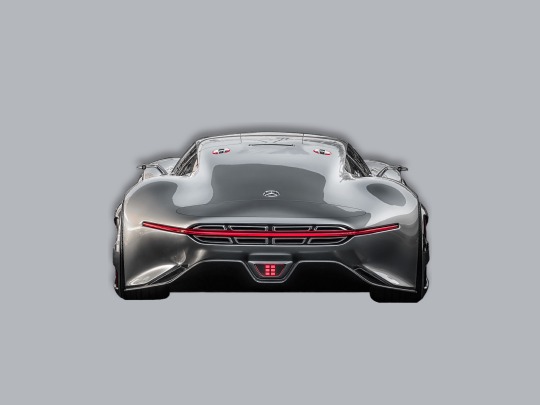

Information
Initially, the car was developed exclusively as one of the models of sports cars for the Gran Turismo game. The ultra-futuristic design of the model was inspired by Mercedes-Benz SLS AMG cars, Formula 1 cars, batmobile, Mercedes-Benz 300SL, racing models of the 1930s and various versions of cars from Mercedes-AMG.
The real model was created on November 20, 2013 at the new Mercedes-Benz Research and Development Center in Sunnyvale (Silicon Valley), California, USA. The implementation of the design into reality was entrusted to Mercedes-Benz design studios around the world. The final versions were approved in Sindelfingen and Carlsbad as part of the digital design process, and then improved with physical modeling at scale 1:1. The interior of the car was handled by a studio from Como, Italy. The car frame was made of aluminum pipes, the body was made of carbon fiber, a removable spoiler was installed at the back.
Characteristics
Top speed: 350 km/h
Power: 591 hp
Weight: 1385 kg
#car#cars#carporn#carphotography#carphotographer#carphotos#carphoto#cargram#carinstagram#carlovers#carsofinstagram#carmodel#carlifestyle#carshow#cargramm#caroftheday#carstagram#carsdaily#exoticcars#carsofinsta#carsovereverything#instacars#cardesign#cardetailing#3d#3dart#3dmodeling#3dmodel#aestheticxcars#mercedes
4 notes
·
View notes
Text
Pagani Imola
2020
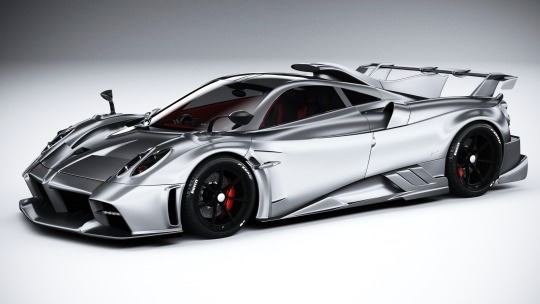







Information
Named after the racetrack on which it was modeled and fine-tuned, the new Pagani Imola is a roadworthy Hypercar with a wholly racing temperament that embodies the maximum expression of Pagani Automobili’s track technology.
With a limited edition of only five examples built, the Pagani Imola has gone through the severest on-track validation test ever applied to a Pagani car. In addition to the regular and already scrupulous validation process, in fact, Imola has covered over 16,000 km on the track at racing speed – the equivalent to about three times the 24 Hours of Le Mans.
Pagani Imola uses the active aerodynamics system introduced by the Huayra, the first road vehicle ever to be equipped with this technology. This means that each of the four mobile winglets behaves according to the driving circumstances in a dynamic and immediate way and even when braking, by generating an aerodynamic braking action.
The suspension geometry has been newly designed to transfer the power and lively 1100 Nm torque to the ground, reduce the dive effect and sway when braking. So much so, the driver can take a corner by braking at the last thousandth of a second.
Characteristics
Top speed: 370 km/h
Acceleration to 100 km/h: 2,8 s
Power: 827 hp
Weight: 1246 kg
#car#cars#carporn#carphotography#carphotographer#carphotos#carphoto#cargram#carinstagram#carlovers#carsofinstagram#carmodel#carlifestyle#carshow#cargramm#caroftheday#carstagram#carsdaily#exoticcars#carsofinsta#carsovereverything#instacars#cardesign#cardetailing#supercar#supercars#supercarlifestyle#supercarsdaily#aestheticxcars#pagani
2 notes
·
View notes
Text
Jaguar E–Type Lightweight Low Drag Coupé
1963
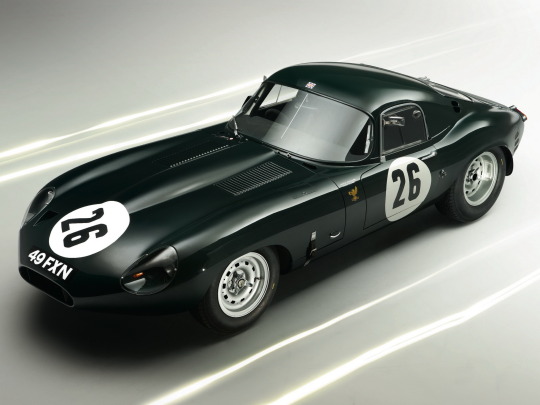
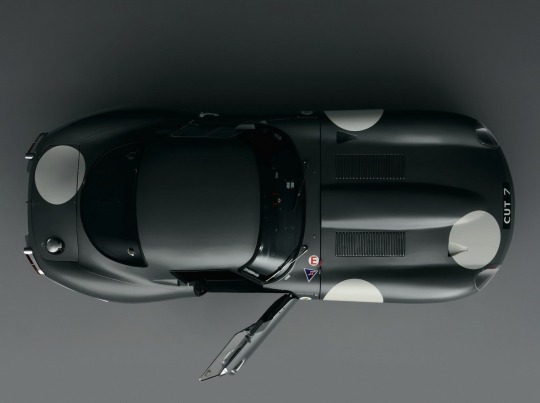

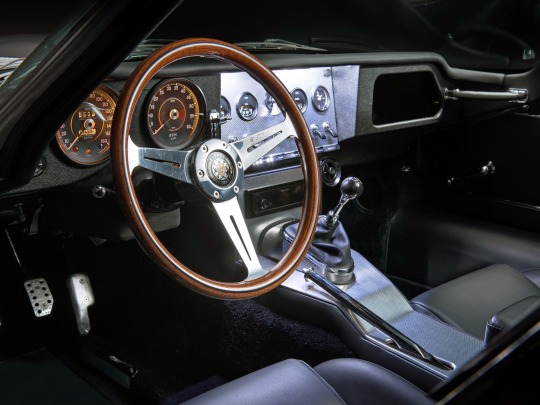
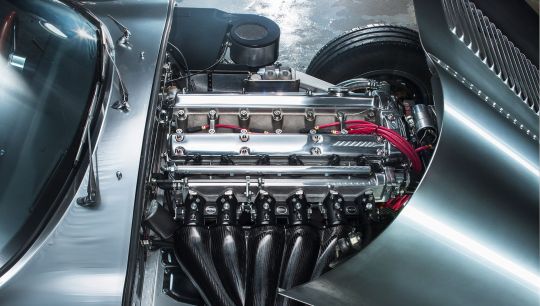
Information
Shortly after the introduction of the E-Type, Jaguar wanted to investigate the possibility of building a car more in the spirit of the D-Type racer from which elements of the E-Type's styling and design were derived. One car was built to test the concept designed as a coupé. Unlike the steel production E-Types, the LDC used lightweight aluminium. Malcolm Sayer retained the original tub with lighter outer panels riveted and glued to it. The front steel sub frame remained intact, the windshield was given a more pronounced slope, and the rear hatch was welded shut. Rear brake cooling ducts appeared next to the rear windows, and the interior trim was discarded, with only insulation around the transmission tunnel. With the exception of the windscreen, all cockpit glass was perspex. A tuned version of Jaguar's 3.8-litre engine with a wide-angle cylinder head design tested on the D-Type racers was used.
The only test bed car was completed in summer of 1962 but was sold a year later to Jaguar racing driver Dick Protheroe. Since then it has passed through the hands of several collectors on both sides of the Atlantic and is now believed to reside in the private collection of the current Viscount Cowdray.
Peter Lindner, the Jaguar distributor in Germany, had his Lightweight modified by competition department to include the low drag roof and rear panels as part of an effort to win the GT class at Le Mans. Lindner's car was more than a match for the Ferrari 250 GTO but mechanical problems forced it out of the race. Lindner was later killed in a racing accident that demolished his car, which has recently been restored.
Jaguar waited too long before committing to a racing program in earnest and what could have been a world champion in 1962 was not competitive by 1965.
#car#cars#carporn#carphotography#carphotographer#carphotos#carphoto#cargram#carinstagram#carlovers#carsofinstagram#carmodel#carlifestyle#carshow#cargramm#caroftheday#carstagram#carsdaily#exoticcars#carsofinsta#carsovereverything#instacars#cardesign#cardetailing#classiccar#classiccars#retrocar#retrocars#aestheticxcars#jaguar e type
56 notes
·
View notes
Text
Shelby AC Cobra Mk III
1965—1967

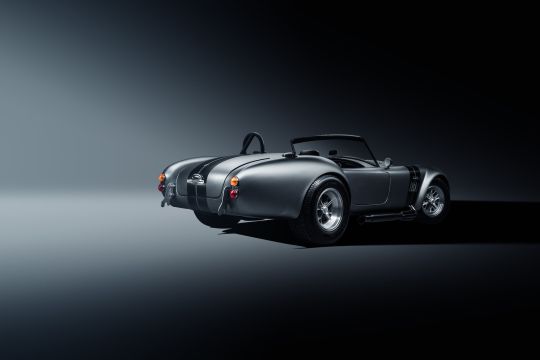


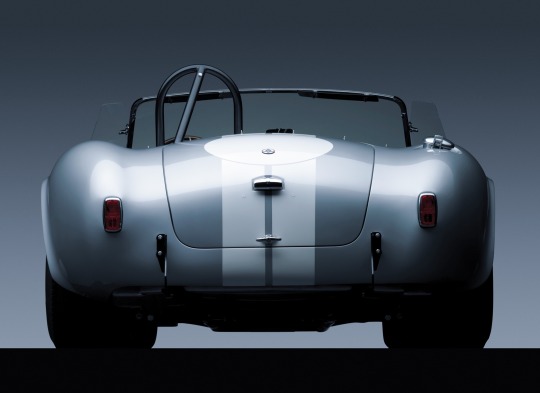

Information
By 1963, Cobra had lost its dominance in racing. Shelby tried to install a large Ford FE V8 390 engine. The development of a new chassis called "AC Cobra Mark III" has begun.
The new car was developed in Detroit in collaboration with Ford and had wide wings and a large hole in the body in front of the radiator. It was equipped with a Ford FE 427 (7.0 l) engine with a capacity of 425 hp, which provided a maximum speed of 262 km/h as standard, or an engine with a capacity of 485 hp (362 kW), which provided a maximum speed of 290 km/h. Production of the Cobra Mark III began on January 1, 1965. Despite the impressive performance, the car sold poorly, so in order to reduce the cost, some AC Cobra 427 were actually fitted with cheaper Ford 428 engines (7.0 liters), designed not for racing, but for use in road conditions. A total of about 300 Mark III cars were shipped to Shelby in the USA during the summers of 1965 and 1966. The MK III missed homologation in the 1965 racing season, but successfully continued to win races until the early 70s.
Characteristics
Maximum speed: 262 km/h
Acceleration to 100 km/h: 4.7
Power: 425 hp
Length: 4445 mm
Width: 1730 mm
Height: 1295 mm
Weight: 1044 kg
#car#cars#carporn#carphotography#carphotographer#carphotos#carphoto#cargram#carinstagram#carlovers#carsofinstagram#carmodel#carlifestyle#carshow#cargramm#caroftheday#carstagram#carsdaily#exoticcars#carsofinsta#carsovereverything#instacars#cardesign#cardetailing#classiccar#classiccars#retrocar#retrocars#aestheticxcars#shelby cobra
66 notes
·
View notes
Text
Koenigsegg Jesko
2019







Information
A limited production mid–engine sports car produced by Swedish automobile manufacturer Koenigsegg. Introduced at the 2019 Geneva Motor Show, the car succeeds the Agera. The name Jeskois a tribute to the company founder's father, Jesko von Koenigsegg.
The Jesko is primarily built as a high–performance track car, with focus on high aerodynamic downforce and more precise handling. Koenigsegg's other current production model, the Regera, is designed as a grand touring–oriented offering.
Characteristics
Top speed: 436 km/h
Power: 1281 hp
Acceleration to 100km/h: 3 s
Length: 4610 mm
Width: 2030 mm
Height: 1210 mm
Weight: 1420 kg
#car#cars#carporn#carphotography#carphotographer#carphotos#carphoto#cargram#carinstagram#carlovers#carsofinstagram#carmodel#carlifestyle#carshow#cargramm#caroftheday#carstagram#carsdaily#exoticcars#carsofinsta#carsovereverything#instacars#cardesign#cardetailing#supercar#supercars#supercarlifestyle#supercarsdaily#aestheticxcars#koenigsegg
1 note
·
View note
Text
Mercedes–Benz 300SL
1955—1963
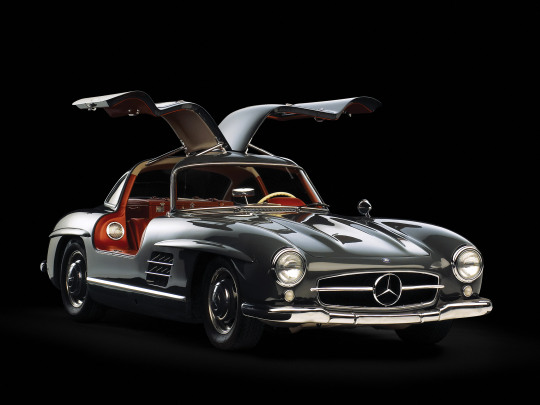
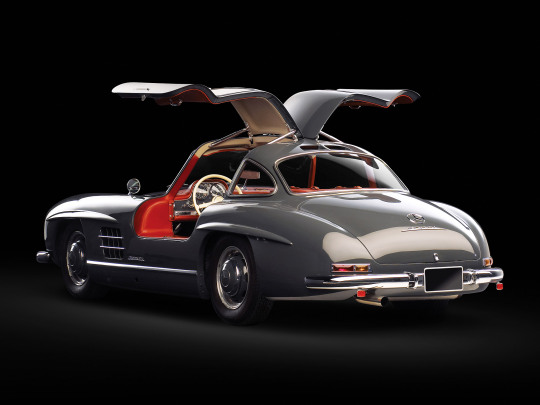



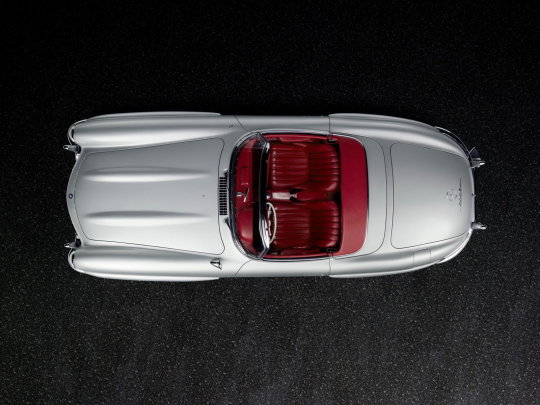


Information
A two-seat sports car which was produced by Mercedez–Benz as a gullwinged coupe (1954–1957) and roadster (1957–1963). It was based on the company's 1952 racer, the W194, with mechanical direct fuel injection which boosted power almost 50 percent in its three-liter overhead camshaft straight-six engine. Capable of reaching a top speed of up to 263 km/h (163 mph), it was a sports car racingchampion and the fastest production car of its time.
Max Hoffman, Mercedes-Benz's United States importer at the time, inspired the 300 SL and saw an American market for such a car. The company introduced the 300 SL in February 1954 at the International Motor Sports Show in New York City (instead of Europe) to get it into U.S. buyers' hands sooner.
SL is the short form for "super-light" in German (super-leicht) – Mercedes' first use of the designation, referring to the car's racing-bred light tubular-frame construction. The 300 SL was voted the "sports car of the century" in 1999.
Characteristics
Top speed: 240 km/h
Power: 215 hp
Acceleration to 100 km/h: 8,9 s
Length: 4520–4570 mm
Width: 1780 mm
Height: 1262 mm
Weight: 1295 kg
#car#cars#carporn#carphotography#carphotographer#carphotos#carphoto#cargram#carinstagram#carlovers#carsofinstagram#carmodel#carlifestyle#carshow#cargramm#caroftheday#carstagram#carsdaily#exoticcars#carsofinsta#carsovereverything#instacars#cardesign#cardetailing#classiccar#classiccars#retrocar#retrocars#aestheticxcars#mercedes
2 notes
·
View notes